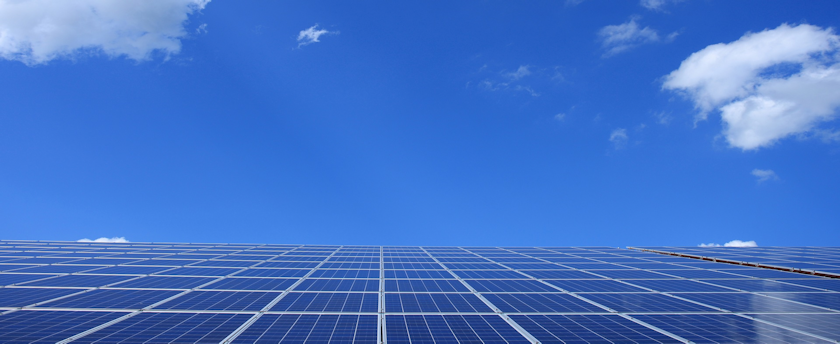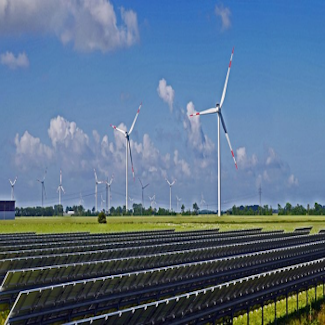
There are those of us that do not remember the seventies. Gas prices shot up to a walloping seventy cents a gallon and people started paying attention to fuel cost and rising energy costs.
Please remember that although the cost of the solar panels is dropping and the panels themselves are more efficient, the soft costs (i. e. installation and permitting) remain high. To learn more about what these cost are and how you can get help for them, Follow this link
Then things leveled out and the trouble seemed to disappear. It did not go away it was just whitewashed and everyone thought we had it under control. WRONG!! The problem was still there we just chose to ignore it. However some technology began to emerge then and now we have put ourselves in a position of no choice. This technology has taken great strides in the last decade and solar power has evolved to a point that it is a viable partial solution to the problem. The added influence for this has come from the desire to provide more sustainable, clean energy to protect our environment. Lets not let this pass as a fad and keep the focus and the resources moving forward to create a total clean energy grid. If you want to get involved in programs designed to promote an environmentally safe energy grid then use our on-line form and we will hook you up. Contact Us Or Get Involved
Solar Energy Is A Clean Environment Choice That Has Reached Its Own!
Solar power is the conversion of sunlight into electricity, either directly using photovoltaics (PV), or indirectly using concentrated solar power(CSP). Concentrated solar power systems use lenses or mirrors and tracking systems to focus a large area of sunlight into a small beam. Photovoltaics convert light into electric current using the photoelectric effect.
Commercial concentrated solar power plants were first developed in the 1980s. The 354 MW SEGS CSP installation is the largest solar power plant in the world, located in the Mojave Desert of California. Other large CSP plants include the Solnova Solar Power Station (150 MW) and the Andasol solar power station (100 MW), both in Spain. The 97 MW Sarnia Photovoltaic Power Plant in Canada, is the world's largest photovoltaic. Crescent Dunes in Nevada is currently one of the largest in the U.S. Read More about Crescent Dunes CSP.
In 2019, 40% of all new electric capacity added to the grid came from solar, the largest such share in history. Solar's increasing competitiveness against other technologies has allowed it to quickly increase its share of total U.S. electrical generation - from just 0.1% in 2010 to more than 2.5% today. The U.S. installed 13.3 gigawatts (GW) of solar PV capacity in 2019 to reach 77.7 GW of total installed capacity, enough to power 14.5 million American homes
Sunlight can be converted directly into electricity using photovoltaics (PV), or indirectly with concentrated solar power (CSP), which normally focuses the sun's energy to boil water which is then used to provide power. Other technologies also exist, such as Stirling engine dishes which use a Stirling cycle engine to power a generator. Photovoltaics were initially used to power small and medium-sized applications, from the calculator powered by a single solar cell to off-grid homes powered by a photovoltaic array.
A significant problem with solar power is installation cost. Developing countries in particular may not have the funds to build solar power plants, although small solar applications are now replacing other sources in the developing world.
Concentrating Solar Power
Concentrating Solar Power (CSP) systems use lenses or mirrors and tracking systems to focus a large area of sunlight into a small beam. The concentrated heat is then used as a heat source for a conventional power plant. A wide range of concentrating technologies exists; the most developed are the parabolic trough, the concentrating linear Fresnel reflector, the Stirling dish and the solar power tower. Various techniques are used to track the Sun and focus light. In all of these systems a working fluid is heated by the concentrated sunlight, and is then used for power generation or energy storage.
A parabolic trough consists of a linear parabolic reflector that concentrates light onto a receiver positioned along the reflector's focal line. The receiver is a tube positioned right above the middle of the parabolic mirror and is filled with a working fluid. The reflector is made to follow the Sun during the daylight hours by tracking along a single axis. Parabolic trough systems provide the best land-use factor of any solar technology. The SEGS plants in California and Acciona's Nevada Solar One near Boulder City, Nevada are representatives of this technology. Compact Linear Fresnel Reflectors are CSP-plants which use many thin mirror strips instead of parabolic mirrors to concentrate sunlight onto two tubes with working fluid. This has the advantage that flat mirrors can be used which are much cheaper than parabolic mirrors, and that more reflectors can be placed in the same amount of space, allowing more of the available sunlight to be used. Concentrating linear Fresnel reflectors can be used in either large or more compact plants.
The Stirling solar dish combines a parabolic concentrating dish with a Stirling engine which normally drives an electric generator. The advantages of Stirling solar over photovoltaic cells are higher efficiency of converting sunlight into electricity and longer lifetime. Parabolic dish systems give the highest efficiency among CSP technologies. The 50 kW Big Dish in Canberra, Australia is an example of this technology.
A solar power tower uses an array of tracking reflectors (heliostats) to concentrate light on a central receiver atop a tower. Power towers are more cost effective, offer higher efficiency and better energy storage capability among CSP technologies. The Solar Two in Barstow, California and the Planta Solar 10 in Sanlucar la Mayor, Spain are representatives of this technology.
Economics
Bloomberg New Energy Finance, in March 2011, put the 2010 cost of solar panels at $1.80 per watt, but estimated that the price would decline to $1.50 per watt by the end of 2011. Nevertheless, there are exceptions-- Nellis Air Force Base is receiving photoelectric power for about 2.2 ¢/kWh and grid power for 9 ¢/kWh. Also, since PV systems use no fuel and modules typically last 25 to 40 years, the International Conference on Solar Photovoltaic Investments, organized by EPIA, has estimated that PV systems will pay back their investors in 8 to 12 years. As a result, since 2006 it has been economical for investors to install photovoltaics for free in return for a long term power purchase agreement. Fifty percent of commercial systems were installed in this manner in 2007 and it is expected that 90% will by 2009. By 2020, PV power is expected to become competitive with fossil fuel in many of the European countries, with costs declining to about half of those in 2010.
Concentrated Solar Power (CSP) facilities produce power more cheaply than photovoltaic systems and may eventually be price-competitive with conventional power plants. The Ivanpah Solar Power Facility is expected to produce power at costs comparable to natural gas.
Additionally, governments have created various financial incentives to encourage the use of solar power. Renewable portfolio standards impose a government mandate that utilities generate or acquire a certain percentage of renewable power regardless of increased energy procurement costs. In most states, RPS goals can be achieved by any combination of solar, wind, biomass, landfill gas, ocean, geothermal, municipal solid waste, hydroelectric, hydrogen, or fuel cell technologies. In Canada, the Renewable Energy Standard Offer Program (RESOP), introduced in 2006 and updated in 2009 with the passage of the Green Energy Act, allows residential homeowners in Ontario with solar panel installations to sell the energy they produce back to the grid at 42¢/kWh, while drawing power from the grid at an average rate of 6¢/kWh.[52] The program is designed to help promote the government's green agenda and lower the strain often placed on the energy grid at peak hours. In March, 2009 the proposed feed-in tariff was increased to 80¢/kWh for small, roof-top systems (=10 kW).
Energy Storage Methods
Solar energy is not available at night, making energy storage an important issue in order to provide the continuous availability of energy. Both wind power and solar power are intermittent energy sources, meaning that all available output must be taken when it is available and either stored for when it can be used, or transported, over transmission lines, to where it can be used. Wind power and solar power tend to be somewhat complementary, as there tends to be more wind in the winter and more sun in the summer, but on days with no sun and no wind the difference needs to be made up in some manner. The Institute for Solar Energy Supply Technology of the University of Kassel pilot-tested a combined power plant linking solar, wind, bio-gas and hydro-storage to provide load-following power around the clock, entirely from renewable sources.
Solar energy can be stored at high temperatures using molten salts. Salts are an effective storage medium because they are low-cost, have a high specific heat capacity and can deliver heat at temperatures compatible with conventional power systems. The Solar Two used this method of energy storage, allowing it to store 1.44 TJ in its 68 m³ storage tank, enough to provide full output for close to 39 hours, with an efficiency of about 99%.
Off-grid PV systems have traditionally used rechargeable batteries to store excess electricity. With grid-tied systems, excess electricity can be sent to the transmission grid. Net metering programs give these systems a credit for the electricity they deliver to the grid. This credit offsets electricity provided from the grid when the system cannot meet demand, effectively using the grid as a storage mechanism. Credits are normally rolled over month to month and any remaining surplus settled annually.
Pumped-storage hydroelectricity stores energy in the form of water pumped when surplus electricity is available, from a lower elevation reservoir to a higher elevation one. The energy is recovered when demand is high by releasing the water: the pump becomes a turbine, and the motor a hydroelectric power generator.
Artificial photosynthesis involves the use of nanotechnology to store solar electromagnetic energy in chemical bonds, by splitting water to produce hydrogen fuel or then combining with carbon dioxide to make bio-polymers such as methanol. Many large national and regional research projects on artificial photosynthesis are now trying to develop techniques integrating improved light capture, quantum coherence methods of electron transfer and cheap catalytic materials that operate under a variety of atmospheric conditions.





